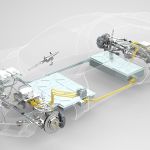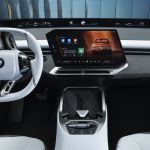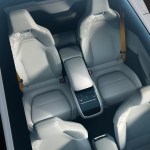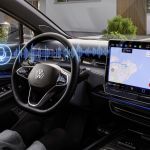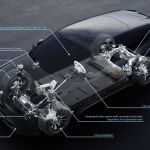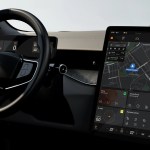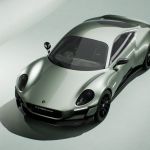The NTT IndyCar Series ushers in a new era of electrified hybrid racing this weekend by introducing an ERS (energy recovery system). A collaborative effort between Honda Racing Corp. USA and suppliers, the system debuts at the Honda Indy 200 at Mid-Ohio.
The new hybrid tech is in the bell housing between the existing 2.2-L, twin-turbocharged V6 engine and transmission, allowing it to fit within the existing powertrain footprint. It captures wasted energy from braking and stores it for later use.
The amount of energy stored per lap varies by track length and type. It can be charged from a 12-V source in the shop, on the pit lane, and by the engine under idle. With weight-saving measures elsewhere within the car, the system adds about 42.5 kg (93.7 lb).
The ERS has four major components: ESS (energy storage system); MGU (motor generator unit); DC/DC converter; and voltage control device. When deployed, the ESS sends energy to the MGU that is linked to the driveshaft of the existing IndyCar engine. In its current form, the ERS adds about 60 hp (45 kW) and 45 N·m (33 lb·ft), but there is room for upward development.
Produced by Honda Racing, the ESS features 20 supercapacitors designed by Skeleton that store the energy harvested by the MGU until its deployment by the drivers. Supercapacitors rather than batteries were used because of the ability to both capture and deploy energy faster. The ESS operates at a maximum of 60 V and 2000 A, and it can be fully charged and deployed in about 4.5 s.
Produced by Empel in collaboration with Ilmor, the 180 model MGU captures energy from braking, turning it into electricity to be stored by the ESS. The MGU is also linked to the engine driveshaft, allowing the driver to deploy the harvested energy as additional power. Like the IndyCar engine, the MGU operates at a maximum of 12,000 rpm.
Produced by BrightLoop Converters, the DC/DC converter ensures that the energy from the ESS and MGU is output at the correct voltage for the 12-V powertrain. The voltage control device is a safety component that ensures that the system never exceeds 60 V.
These components interface with the existing McLaren Applied TAG-400i ECU (engine control unit), with additional software to ensure coordination between the ERS and Honda or any other manufacturer’s engine.
The regen process can be controlled automatically by technology or manually by the driver. In the automatic process, software dictates a set level of regeneration while racing. In the manual process, drivers have more control over the degree of energy harvesting. A button on the steering wheel activates energy harvesting at a set rate while pulling a paddle on the rear of the steering wheel changes the amount of regeneration.
While Mid-Ohio is a “road course,” the process applies to IndyCar oval racing, where it is common for lifting or braking when drafting or executing a pass. Regen can occur as drivers are setting up to pass, and that energy is deployed when making a pass.
An additional ERS benefit is the ability to start or restart the car without external assistance. Even if the driver “empties” the ESS of charge, the system always keeps some energy in reserve to allow for multiple engine restarts should they be needed. With stalling being a common cause for full-course cautions, the tech will not only reduce the number of yellow and red flag periods, but also the risk safety workers face while attending to a stalled race car on course.
For more on the IndyCar ERS, check out the Honda Racing YouTube video series.
- IndyCar ERS.
- Honda supplies the hybrid tech for IndyCar 2024.
- Andretti Autosport’s IndyCar racecar.
- Ganassi Honda at 2024 Firestone Grand Prix of Monterey.
- IndyCar ERS (silver) in racecar.
- IndyCar hybrid ERS ghost view.
- IndyCar hybrid ERS unit side view.
- IndyCar hybrid ERS unit in belhousing.
- IndyCar hybrid energy storage system.
- Supercapacitor for IndyCar.





























